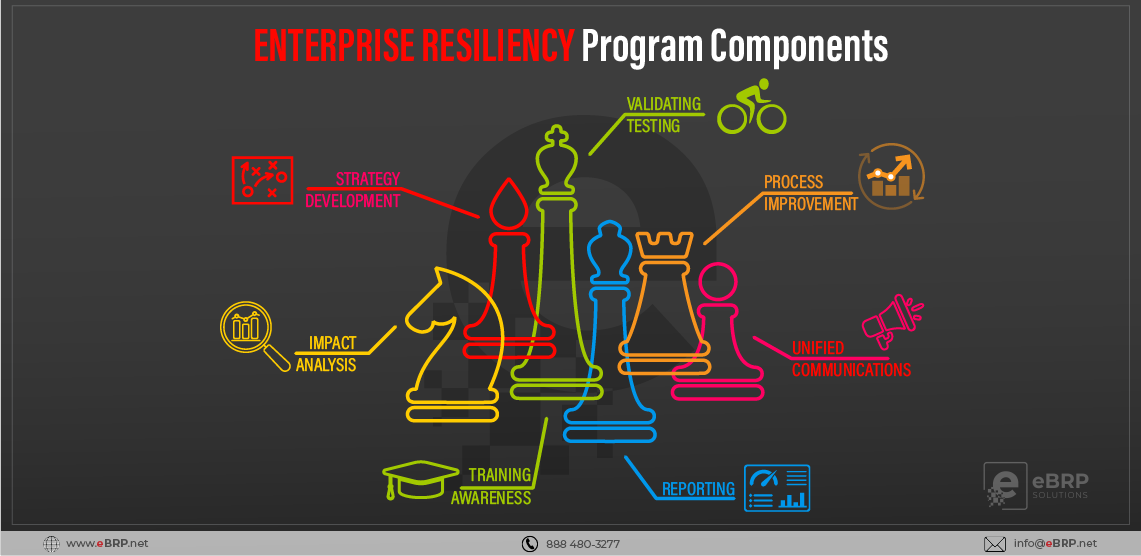Category: Uncategorized
In today’s threat landscape, the ability of an organization to swiftly recover from disruptions is not just an advantage; it’s a necessity. This resilience defines an enterprise’s capacity to restore its operations, assets, and services to ensure uninterrupted delivery of products and services. Here’s a breakdown of the key components…
Orchestrating BC/DR Testing: Virtual – Emergency Operations Centers
Enhancing Planning and Logistics Management Coordinating BC/DR tests involves intricate planning and logistics management. The traditional approach might fall short, especially when participants operate out of different locations. Here, eBRP CommandCentre, a virtual EOC platform, emerges as a powerful solution, streamlining the entire process. eBRP Suite CommandCentre …
Aligning Cyber Incident Response Planning with Your BC/DR Program
Cyber disruptions – and their impact on both reputations and profitability – have risen to the top of nearly every recent risk study. These increasing concerns weigh heavily on Executive Suites and Boards. In the IT realm, CIO’s and CISO’s now focus their efforts on mitigating those risks, and planning…
What Can You Do when your BCM software Relationship Falls Apart
“This isn’t working.” “I’ve changed.” “I don’t see a future with you.” Those ‘breakup’ lines may apply to your Business Continuity Management software or your latest paramour. Not all relationships succeed. When things go awry, goodbye may be the best solution. But that may seem impossible – even when you…
Aligning BC/DR to CSIRP Challenges
The immediate reaction to a cyber-security incident is the FUD factor (Fear, Uncertainty and Doubt); more like ‘chickens running around with their head cut off’. An agile response requires tested and documented Incident Response Plans – including Crisis Management, Business Continuity and IT Disaster Recovery Plans. Automating the workflow facilitates…
Technology Modeling – the eBRP Way
Definition: Technology modeling is a point-in-time snapshot of an Enterprise’s IT Services – including its dependencies on infrastructure – and interfaces to other services and Business Processes which depend on them. This organizational Technology Model provides executives the critical decision support they need to understand the impacts of a service…
eBIA – The eBRP Way
Definition: A Business Impact Analysis (BIA) is the cornerstone of creating a BCM program. Basically, a BIA helps prioritize restoration efforts in the initial response activities following an operational disruption. A secondary objective of a BIA is identification of all operational dependencies to enable successful business restoration.










